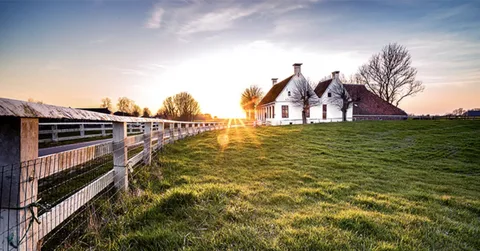Rural Living: The Benefits and Challenges of Life in the Countryside

Rural living has long been romanticized in literature and media, often depicted as a serene lifestyle surrounded by nature, community, and simplicity. While life in the countryside can offer numerous benefits, it also presents unique challenges. This article explores the advantages and drawbacks of rural living, providing insight into what makes this lifestyle appealing to many.
The Benefits of Rural Living
-
Connection to Nature: One of the most significant advantages of rural living is the proximity to nature. Residents often enjoy wide open spaces, fresh air, and beautiful landscapes, fostering a deep connection to the environment. This can lead to a healthier lifestyle, with opportunities for outdoor activities like hiking, gardening, and wildlife observation.
-
Sense of Community: Rural areas often foster tight-knit communities where neighbors know each other and support one another. This sense of belonging can create lasting friendships and a strong support network, making it easier to feel at home.
-
Lower Cost of Living: Generally, the cost of living in rural areas is lower than in urban centers. Housing prices, property taxes, and everyday expenses can be significantly reduced, allowing residents to stretch their budgets further.
-
Peace and Quiet: The slower pace of life in rural settings often leads to less noise and fewer distractions. This peaceful environment can enhance well-being, reduce stress, and improve mental health.
-
Opportunities for Self-Sufficiency: Rural living often encourages self-sufficiency through gardening, farming, and crafting. Many rural residents engage in sustainable practices, growing their own food and reducing reliance on commercial goods.
The Challenges of Rural Living
-
Limited Access to Services: Rural areas may lack access to essential services such as healthcare, education, and public transportation. Residents might need to travel significant distances to reach these facilities, which can be inconvenient and time-consuming.
-
Job Opportunities: Employment options can be limited in rural areas, leading some residents to commute to urban centers for work or rely on remote work opportunities. This can create financial instability for those unable to find local jobs.
-
Internet Connectivity: While many rural areas are improving in terms of technology access, internet connectivity can still be a challenge. Slow or unreliable internet can hinder remote work, online learning, and access to information.
-
Social Isolation: While rural communities can be close-knit, they can also be isolating. Those who are new to the area may find it challenging to integrate, and geographic distances can make socializing more difficult.
-
Weather and Natural Disasters: Rural living often means being more exposed to the elements, whether it’s harsh winters, heavy rainfall, or natural disasters like wildfires or floods. Residents must be prepared for these challenges and have plans in place for emergencies.
Conclusion
Rural living offers a unique blend of advantages and challenges that appeal to many seeking a different lifestyle. From a deep connection to nature and strong community bonds to the hurdles of limited services and job opportunities, each aspect of rural life shapes the experience of its residents. For those who value tranquility, simplicity, and a slower pace, rural living can be a fulfilling choice. However, it’s essential to weigh the benefits against the challenges and consider personal needs and goals when contemplating a move to the countryside. Ultimately, embracing rural life is about finding a balance that aligns with one's values and aspirations.
- Arts
- Business
- Computers
- Jocuri
- Health
- Home
- Kids and Teens
- Money
- News
- Recreation
- Reference
- Regional
- Science
- Shopping
- Society
- Sports
- Бизнес
- Деньги
- Дом
- Досуг
- Здоровье
- Игры
- Искусство
- Источники информации
- Компьютеры
- Наука
- Новости и СМИ
- Общество
- Покупки
- Спорт
- Страны и регионы
- World


